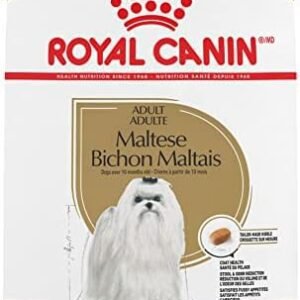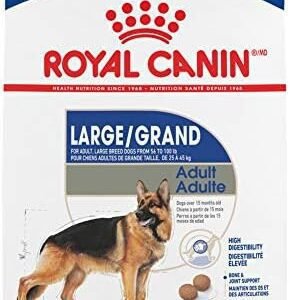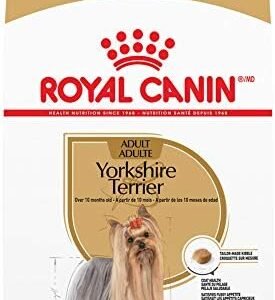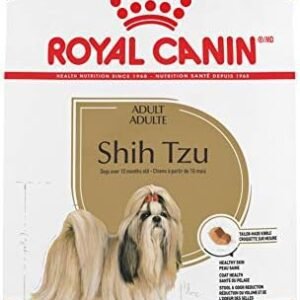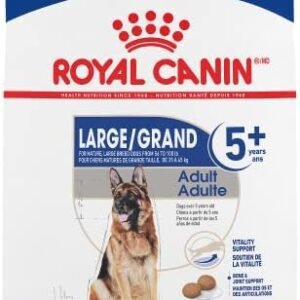Have you ever found yourself indulging in the exotic sweetness of a kiwi and wondered if your four-legged friend could savor this delight too? It’s a common question among pet owners who strive to provide the best for their beloved canines. Our furry companions are not just pets; they are family. And like any family member, their diet plays a pivotal role in their overall well-being. But can dogs eat kiwi safely? This seemingly simple query unravels a world of considerations, and in this comprehensive guide, we will delve deep into the nuances of feeding kiwi to your canine companion.

Table of Contents
Unveiling the Kiwi Mystery
The kiwi, a vibrant green fruit speckled with tiny black seeds, is renowned for its rich vitamin C content and unique taste. It finds its way into smoothies, desserts, and various culinary delights, delighting human taste buds worldwide. But what about our furry friends? Can they relish this tropical gem without any adverse effects?
Understanding the Nutritional Tapestry of Kiwi
Before we answer the question of whether dogs can eat kiwi, let’s explore the nutritional tapestry of this fruit. Kiwi is not just a burst of flavor; it’s a powerhouse of essential nutrients. Rich in vitamin C, an indispensable nutrient for bolstering the immune system, kiwi also offers a healthy dose of vitamin K, vital for blood clotting. Additionally, the fruit boasts dietary fiber, promoting a robust and well-functioning gastrointestinal tract. For humans, these attributes make kiwi a darling of nutritionists. But how does it translate to our canine companions?
Balancing Act: The Pros and Cons of Feeding Kiwi to Dogs
Yes, dogs can indeed consume kiwi, but as with any treat, moderation is key. The natural sugars present in kiwi can be detrimental if consumed excessively. Just like in humans, too much sugar in a dog’s diet can lead to unwanted weight gain and dental issues. As responsible pet owners, it’s crucial to strike a balance between introducing a variety in your dog’s diet and ensuring their health remains optimal.
Navigating the Perils: Potential Risks and Allergic Reactions
While kiwi is generally safe for dogs, individual sensitivities can’t be overlooked. Some canines might be allergic to kiwi, which could manifest in various ways such as itching, vomiting, or diarrhea. Monitoring your pet closely after introducing any new food is fundamental. Immediate veterinary attention is necessary if you observe any adverse reactions.
The Fine Art of Preparation: Making Kiwi Dog-Friendly
Now that we’ve established that dogs can enjoy kiwi in moderation, let’s talk about the correct way to serve this delectable fruit. Proper preparation is key to ensuring your dog’s safety and enjoyment:
1. Peeling the Kiwi:
The fuzzy skin of kiwi might be a delight for humans, but it’s not as pleasant for your dog’s digestive system. Ensure to peel the kiwi thoroughly, removing all the skin before serving it to your pet.
2. Seed Removal:
While the seeds in kiwi are edible, they can pose a choking hazard and lead to digestive discomfort. Take a moment to scoop out these tiny seeds before slicing the kiwi into dog-friendly portions.
3. Size Matters:
Cut the kiwi into small, bite-sized pieces. This not only prevents choking but also makes it easier for your dog to chew and digest the fruit without any difficulty.
Exploring the Nutritional Marvels of Kiwi for Canines
The question of whether our canine companions can enjoy the exotic delight of kiwi is a fascinating one. The good news is, kiwi is not toxic or dangerous to dogs. Many dogs might actually relish the unique taste of this tropical fruit. However, as with any new addition to a dog’s diet, it’s essential to understand the nutritional intricacies before indulging their taste buds.
Unlocking the Nutritional Riches of Kiwi
To comprehend if kiwi can be a wholesome treat for our furry friends, let’s dissect its nutritional composition:
Nutritional Facts of Kiwi for Dogs:
| Nutrient | Amount per 100g |
|---|---|
| Calories | 42 kcal |
| Protein | 0.8 g |
| Carbohydrates | 10.1 g |
| Fiber | 2.1 g |
| Sugar | 6.2 g |
| Fat | 0.4 g |
| Vitamin C | 137% of the Daily Value (DV) for humans |
| Potassium | 7% of the DV for humans |
| Vitamin K | 31% of the DV for humans |
| Vitamin A | 1% of the DV for humans |
As illustrated in the table, kiwi packs a nutritional punch. It is a low-calorie fruit, making it an excellent option for dogs who need to watch their weight. Additionally, it is a good source of dietary fiber, promoting healthy digestion. The high vitamin C content in kiwi supports a robust immune system, essential for a dog’s overall health. Furthermore, vitamin K, calcium, and iron contribute to various bodily functions, ensuring your dog stays strong and active.
Balancing Act: The Pros and Cons of Feeding Kiwi to Dogs
While kiwi boasts an impressive nutritional profile, it’s crucial to recognize the potential drawbacks. The natural sugars in kiwi, although minimal, require moderation, especially for dogs prone to weight gain or diabetes. As responsible pet owners, understanding the balance between these benefits and risks is vital.
Complementing Diets, Not Replacing Them
Kiwi, while offering essential vitamins and minerals, should complement, not replace, a dog’s primary diet. Dogs primarily need a well-balanced diet of high-quality dog food formulated to meet their specific nutritional requirements. Kiwi, when given as an occasional treat, can add variety and flavor to their diet, enhancing their culinary experience.
The Need for Watchful Observation
Every dog is unique, and their tolerance to certain foods can vary. Therefore, when introducing kiwi or any new food to your dog, careful observation is paramount. Monitor their reactions closely, especially in the first few instances of feeding. If you notice any signs of allergies, such as itching, vomiting, or diarrhea, it’s imperative to seek prompt veterinary advice.
Understanding Portion Control: How Much Kiwi Can Your Dog Safely Enjoy?
Feeding our pets is an act of love, and when it comes to treats like kiwi, it’s essential to strike the right balance between indulgence and caution. Moderation, in this context, is not just a suggestion; it’s a golden rule. Even though kiwi offers a myriad of health benefits, too much of a good thing can have adverse effects on your furry friend.

The Rule of Moderation
When incorporating kiwi into your dog’s diet, remember that treats, including fruits, should constitute only a certain percentage of your dog’s daily calorie intake. Experts recommend that treats should make up no more than 10% of your dog’s daily calories. This principle ensures that your dog’s primary nutritional needs are met by their regular, balanced diet.
Start Small, Observe, and Proceed with Caution
Before you start envisioning your dog enjoying an entire kiwi, it’s crucial to begin with a small piece. Observe your dog closely for any signs of allergies or digestive issues. Like humans, dogs can have individual reactions to different foods. Starting small allows you to gauge your dog’s tolerance and enjoyment level.
Proper Preparation: The Key to Safe Consumption
We’ve already discussed the importance of removing the skin and seeds from the kiwi. The skin, being hard to digest, can cause gastrointestinal discomfort, and the seeds, although edible, pose a choking hazard. By meticulously peeling the kiwi and scooping out the seeds, you’re ensuring that your dog receives the edible, nutritious part of the fruit without any potential risks.
Breed and Size Matters
Just like humans, dogs come in various sizes and breeds, each with unique dietary needs and tolerances. A large breed dog, such as a Labrador or Golden Retriever, might be able to tolerate a slightly larger serving of kiwi compared to a smaller breed, like a Chihuahua or Pomeranian. Consider your dog’s size and breed when determining an appropriate serving size.
Appropriate Serving Sizes Based on Weight
To provide a general guideline, here’s how you can calculate a safe serving size of kiwi for your dog based on their weight:
- Small Dogs (Up to 20 lbs): Half a teaspoon to one teaspoon of kiwi, cut into small pieces.
- Medium Dogs (20-50 lbs): One to two teaspoons of kiwi, cut into small pieces.
- Large Dogs (50-100 lbs): Two to four teaspoons of kiwi, cut into small pieces.
- Giant Dogs (Above 100 lbs): Four teaspoons to one tablespoon of kiwi, cut into small pieces.
Remember, these are approximate measurements. Always observe your dog’s reaction after offering kiwi and adjust the serving size accordingly. If your dog shows any signs of discomfort or allergies, refrain from giving them kiwi in the future.
Conclusion: Treating Your Dog Right, One Kiwi at a Time
In the delightful realm of dog treats, kiwi can undoubtedly have its place. By adhering to the principles of moderation, careful observation, and appropriate serving sizes, you can offer your furry friend a tasty and nutritious experience. Let your dog relish the goodness of kiwi in small, thoughtfully prepared portions, enhancing their diet with a burst of flavor and nutrition. As a responsible pet owner, you hold the key to ensuring that every treat, including this exotic fruit, contributes to your dog’s overall health and happiness. So go ahead, share a small, prepared slice of kiwi with your canine companion, and witness the joy it brings to their tail-wagging world.
Potential Risks of Feeding Kiwi to Dogs: Understanding Allergies and Adverse Reactions
While kiwi can be a delightful treat for dogs when served responsibly, it’s crucial to recognize that not all canine companions react the same way to new foods. Dogs, much like humans, can develop allergies or food intolerances, and kiwi is no exception. Understanding the potential risks associated with feeding kiwi to dogs is paramount to their well-being.

Food Allergies in Dogs: A Real Concern
Food allergies in dogs are not uncommon, and kiwi, despite its nutritional benefits, can trigger allergic reactions in some canines. These reactions can vary widely, from mild to severe, and may manifest as itching, redness, hives, swelling, vomiting, diarrhea, or even difficulty breathing. It’s essential to recognize that allergies are individual-specific; what suits one dog might not be suitable for another.
Short-Term Signs of Food Intolerance
Apart from allergies, dogs can also experience food intolerance, which often leads to short-term gastrointestinal distress. Symptoms may include upset stomach, bloating, gas, or loose stools. If your dog exhibits any of these signs after consuming kiwi, it’s a clear indication that their system might not be tolerating the fruit well.
Specific Hazards
Beyond allergies and food intolerance, there are specific components in kiwi that could pose risks to your dog:
1. High Sugar Content:
Kiwi contains natural sugars. While these sugars are generally harmless in small quantities, excessive consumption could lead to weight gain and dental problems in dogs.
2. Oxalates:
Kiwi, like many fruits and vegetables, contains oxalates. In significant quantities, oxalates can lead to kidney issues, especially in dogs prone to kidney stones.
3. Latex Allergy:
Kiwi contains proteins similar to those found in latex. Dogs allergic to latex might also react adversely to kiwi, exhibiting symptoms such as itching, hives, or swelling.
Signs and Symptomsof Adverse Reactions
It’s vital to be vigilant and observe your dog closely after introducing kiwi into their diet. Signs of adverse reactions can include:
- Scratching or Itching: Excessive scratching or itching, especially around the face and paws, could indicate an allergic response.
- Digestive Distress: Persistent vomiting, diarrhea, or signs of discomfort such as abdominal bloating or gas are red flags.
- Swelling: Swelling, particularly around the face, eyes, or throat, is a severe symptom of an allergic reaction and requires immediate medical attention.
- Breathing Difficulties: Labored breathing, wheezing, or coughing might suggest a severe allergic reaction and necessitate immediate emergency care.
Conclusion: Prioritizing Your Dog’s Health and Well-Being
In conclusion, while kiwi offers numerous nutritional benefits, it’s imperative to be aware of the potential risks and signs of adverse reactions in your dog. Responsible pet ownership involves not only providing treats but also understanding your pet’s unique sensitivities and needs. Always start with small portions, monitor your dog closely, and be prepared to act swiftly if you notice any concerning symptoms.
Remember, your veterinarian is your best ally in your dog’s health journey. If you have any doubts or concerns about feeding kiwi to your dog, consult with a professional. By being informed and attentive, you can ensure that your furry companion enjoys a safe and healthy culinary adventure, keeping their tail wagging and their health thriving.
Enhancing Your Dog’s Culinary Experience: Creative Ways to Enjoy Kiwi
Now that we have established that kiwi can be a delightful addition to your dog’s diet, let’s explore the various exciting and creative ways you can feed this tropical fruit to your furry friend. Making kiwi a part of your dog’s culinary adventures not only ensures they receive the nutritional benefits but also adds a burst of flavor to their meals.
1. Fresh or Frozen Treats:
One of the simplest ways to introduce kiwi to your dog is by serving it fresh or frozen. Slice the kiwi into small, manageable pieces and freeze them. Frozen kiwi chunks can serve as refreshing treats, especially on a warm day. The cool texture can be particularly soothing for your dog’s gums and can serve as a healthy alternative to store-bought frozen treats.
2. Food Topper or Mixer:
Kiwi can also be used as a food topper or mixer for your dog’s regular meals. Mash a small amount of kiwi and mix it into your dog’s food. Not only does this enhance the flavor, but it also adds a nutritional boost. Remember, moderation is key, so start with a small quantity and observe how your dog reacts.
3. Homemade Treats and Snacks:
Get creative in the kitchen and experiment with homemade dog treats featuring kiwi. Here’s a simple recipe to get you started:
Kiwi Dog Biscuits:
Ingredients:
- 1 ripe kiwi, peeled and mashed
- 1 cup whole wheat flour
- 1/4 cup oats
- 1 egg
- 1 tablespoon honey (optional)
- Water, as needed
Instructions:
- Preheat your oven to 350°F (175°C).
- In a mixing bowl, combine the mashed kiwi, whole wheat flour, oats, egg, and honey (if using). Mix well.
- Add water gradually until the mixture forms a firm dough.
- Roll out the dough on a floured surface and cut it into small, bite-sized shapes using cookie cutters.
- Place the biscuits on a baking sheet lined with parchment paper.
- Bake for 15-20 minutes or until the biscuits turn golden brown.
- Allow the biscuits to cool completely before offering them to your dog.
4. Enhancing Regular Meals:
Kiwi can also be used to enhance your dog’s regular meals. For example, you can mix small kiwi pieces with their kibble or add them to homemade dog food recipes. The natural sweetness of kiwi might encourage picky eaters to enjoy their meals more.
5. Fruit Salad for Dogs:
Create a refreshing fruit salad for your dog by combining kiwi with other dog-safe fruits like blueberries, apples, or watermelon. Serve this as an occasional treat, and your dog will relish the variety of flavors and textures.
Conclusion: Elevating Mealtime Moments with Kiwi
In conclusion, incorporating kiwi into your dog’s diet can transform mealtime into a delightful experience. Whether served as frozen treats, mixed into meals, or as part of homemade goodies, kiwi adds a healthy twist to your dog’s culinary adventures. Just like humans, dogs appreciate variety and flavors, and with kiwi, you have a nutritious tool to make their meals exciting.
Remember, while kiwi can be a wonderful addition, it should always be served in moderation. By offering kiwi in these creative ways, you not only cater to your dog’s taste buds but also ensure they receive essential nutrients in a fun and enjoyable manner. So, roll up your sleeves, get into the kitchen, and embark on a culinary journey that will leave your furry friend wagging their tail in delight!
FAQs about Dogs Eating Kiwi
As the topic of dogs indulging in kiwi gains attention, a plethora of questions arise, reflecting the concerns and curiosity of pet owners. Let’s delve into the frequently asked questions about dogs eating kiwi and provide detailed, informative answers to address these common queries.

1. Can All Dogs Eat Kiwi?
Yes, in theory, most dogs can consume kiwi. However, it’s essential to observe your dog’s reaction after the first serving. Some dogs might have allergies or sensitivities, making it unsuitable for them.
2. Is it Safe for Puppies to Eat Kiwi?
Puppies have sensitive digestive systems. While a small, well-peeled, and seedless kiwi piece might not harm them, it’s better to wait until they are a bit older to introduce this fruit. Consult your vet before including kiwi in a puppy’s diet.
3. Can Dogs Eat Kiwi Skin?
No, it’s best to avoid feeding your dog kiwi skin. The fuzzy skin is hard to digest and can lead to gastrointestinal discomfort. Always peel the kiwi before offering it to your furry friend.
4. Are Organic Kiwis Safer for Dogs?
Organic kiwis, grown without pesticides, are generally safer. However, even organic kiwis need to be properly prepared, with the skin and seeds removed, to make them safe for dogs.
5. Can Kiwi Seeds Cause Blockages?
While kiwi seeds are small and generally safe, feeding large quantities might pose a risk of digestive issues or blockages. Removing the seeds reduces this risk significantly.
6. What Are the Signs of Kiwi Allergy in Dogs?
Signs of kiwi allergy in dogs can include itching, redness, hives, swelling, vomiting, diarrhea, or difficulty breathing. If you notice any of these symptoms, consult your veterinarian promptly.
7. Can Diabetic Dogs Eat Kiwi?
Kiwi, like other fruits, contains natural sugars. Diabetic dogs should consume it sparingly due to the sugar content. Always consult your vet before including kiwi in a diabetic dog’s diet.
8. Can Kiwi Treat Bad Breath in Dogs?
The fibrous texture of kiwi can help in cleaning a dog’s teeth, reducing bad breath. However, it’s not a substitute for proper dental care. Regular brushing and dental treats specifically designed for oral health are more effective.
9. How Can Kiwi Be Included in a Dog’s Weight Loss Diet?
Kiwi, being low in calories and high in fiber, can be a part of a dog’s weight loss diet. Use it as a treat replacement for higher-calorie snacks. However, always account for the total calorie intake and consult your vet for a tailored weight loss plan.
10. Can Dogs Eat Kiwi Leaves?
No, kiwi leaves are not safe for dogs. They might contain compounds harmful to canines. Stick to the edible part of the fruit and avoid any other components, including leaves.
Understanding these common concerns about dogs consuming kiwi is crucial for responsible pet owners. By being well-informed and observant, you can ensure that your dog enjoys this exotic fruit safely and without any adverse reactions. Always prioritize your pet’s health and well-being by consulting a veterinarian for personalized dietary advice, especially if you have specific concerns about your dog’s diet. Remember, each dog is unique, and what works for one might not be suitable for another, making tailored care the best approach for your beloved furry companion.
Conclusion
In conclusion, while dogs can indulge in the occasional delight of kiwi, it’s crucial to approach this tropical fruit with caution and moderation. Kiwi, packed with vitamins and fiber, can be a healthy treat when prepared and served properly. Yet, it’s essential to recognize that it’s not a necessary component of your dog’s diet. Excessive consumption, especially with seeds and skin, can lead to digestive issues and allergies.




















